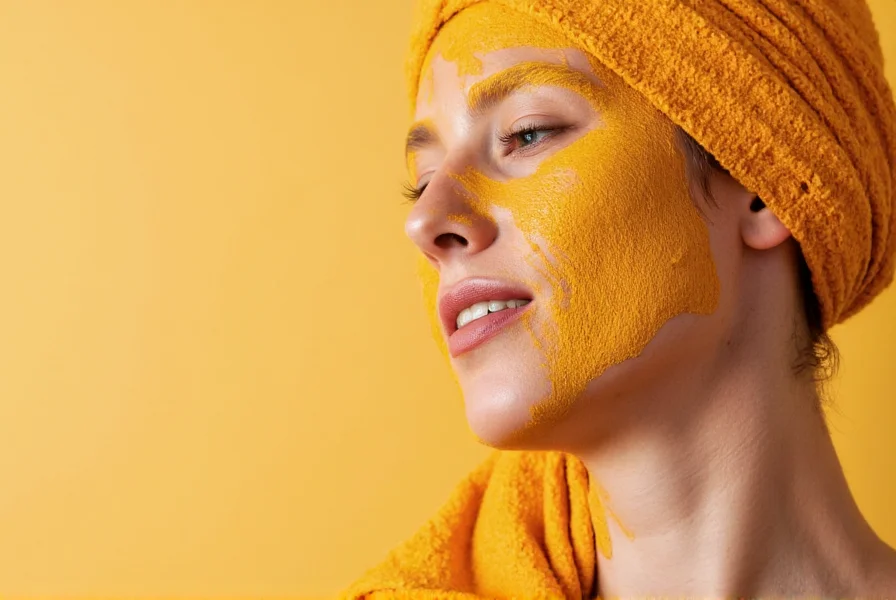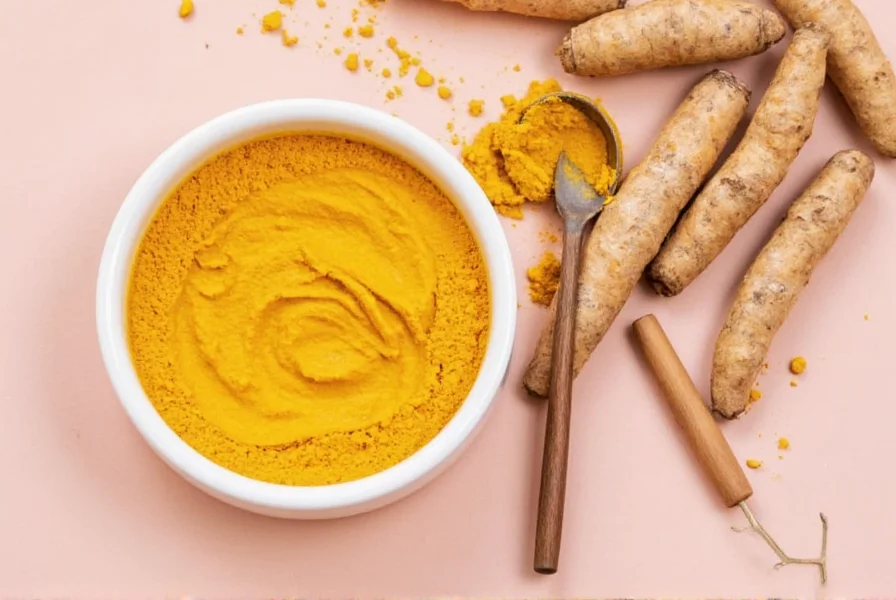The Science Behind Turmeric's Skin Benefits
Curcumin, the active compound in turmeric (Curcuma longa), constitutes about 2-8% of the spice and delivers most of its therapeutic properties. Research published in Phytotherapy Research demonstrates curcumin's ability to inhibit inflammatory pathways while neutralizing free radicals that accelerate skin aging. Unlike many commercial skincare ingredients, turmeric works through multiple mechanisms: reducing inflammation, fighting bacteria, and stimulating collagen production.
A 2020 clinical trial in the Journal of Cosmetic Dermatology found that a 1% curcumin gel significantly reduced inflammatory acne lesions by 65% after eight weeks of use. The study noted turmeric's dual action—reducing both bacteria and inflammation—makes it particularly effective for acne-prone skin without the drying effects of conventional treatments.
Top 5 Evidence-Based Turmeric Uses for Skin
| Skin Concern | How Turmeric Helps | Recommended Application |
|---|---|---|
| Acne and breakouts | Antibacterial properties target P. acnes bacteria; reduces inflammation | Mix 1 tsp turmeric with honey and yogurt; apply 2-3 times weekly |
| Hyperpigmentation | Inhibits melanin production; evens skin tone | Combine with lemon juice (diluted) in face mask; use 1-2 times weekly |
| Redness and inflammation | Blocks inflammatory cytokines; soothes irritated skin | Add to aloe vera gel; apply as calming mask |
| Wound healing | Stimulates tissue regeneration; prevents infection | Dilute with coconut oil; apply to minor cuts or scrapes |
| Signs of aging | Boosts collagen; protects against UV damage | Mix with avocado and olive oil; use as anti-aging mask |
Effective Turmeric Face Mask Recipes
Creating your own turmeric skincare treatments ensures freshness and avoids unnecessary additives. These dermatologist-approved recipes address specific concerns:
Acne-Fighting Turmeric Mask
Mix 1 teaspoon turmeric powder with 2 tablespoons plain Greek yogurt and 1 teaspoon raw honey. The lactic acid in yogurt gently exfoliates while honey provides additional antibacterial properties. Apply for 15 minutes before rinsing with lukewarm water. Use twice weekly for best results treating inflammatory acne.
Brightening Turmeric and Milk Mask
Combine 1/2 teaspoon turmeric with 1 tablespoon milk (or coconut milk for sensitive skin) and 1 teaspoon oat flour. The milk's lactic acid works synergistically with turmeric to fade dark spots while oat flour soothes potential irritation. Leave on for 10-12 minutes before rinsing. Ideal for dull skin and post-acne marks.

Important Safety Considerations
Turmeric's vibrant yellow color can temporarily stain light skin tones. To prevent this, always perform a patch test 24 hours before full application. Mix a small amount with water and apply behind your ear. Discontinue use if you experience redness, itching, or burning.
People with sensitive skin should dilute turmeric with soothing ingredients like aloe vera or honey. Avoid using turmeric before sun exposure as it may increase photosensitivity in some individuals. Those with known allergies to ginger or other rhizomes should consult a dermatologist before trying turmeric treatments.
For optimal results without staining, use culinary-grade turmeric powder rather than supplements. The concentration in supplements is too high for direct skin application and may cause irritation.
Maximizing Turmeric's Effectiveness
Curcumin has limited bioavailability when used alone. Enhance absorption by combining turmeric with black pepper (which contains piperine) or healthy fats like coconut oil. A study in Molecular Pharmaceutics showed piperine increases curcumin absorption by up to 2000%.
Store prepared masks in airtight containers in the refrigerator for no longer than 48 hours. Freshly prepared treatments deliver maximum potency. For ongoing skin benefits, incorporate turmeric into your diet while using topical applications—this dual approach supports skin health from within and without.
When to Consult a Professional
While turmeric offers many natural skincare benefits, it shouldn't replace medical treatment for serious skin conditions. Consult a dermatologist if you have:
- Severe cystic acne that doesn't respond to treatment
- Open wounds or infected skin areas
- Autoimmune skin disorders like psoriasis or eczema
- Significant hyperpigmentation that persists after 8-12 weeks of consistent treatment
Frequently Asked Questions
Does turmeric really lighten skin tone?
Yes, turmeric can help even skin tone and reduce hyperpigmentation. Curcumin inhibits melanin production, which causes dark spots. Clinical studies show noticeable improvement in skin brightness after 4-8 weeks of consistent use, though results vary by skin type.
How long does it take to see results from turmeric on skin?
Most people notice reduced inflammation and improved skin texture within 2-3 weeks of regular use. For significant improvements in acne, hyperpigmentation, or fine lines, consistent application 2-3 times weekly for 6-8 weeks is typically needed. Individual results vary based on skin type and concern.
Can I leave turmeric on my face overnight?
It's not recommended to leave turmeric on overnight due to potential staining and increased risk of irritation. Most turmeric masks should be left on for 10-20 minutes before rinsing. If you want extended treatment, consider diluted turmeric in a wash-off cleanser rather than an overnight mask.
What's the best way to remove turmeric stains from skin?
To remove turmeric stains, gently exfoliate with a mixture of baking soda and coconut oil, or use a mild soap with lemon juice. Stains typically fade within 24 hours. For immediate reduction, apply milk or yogurt to the stained area for 5 minutes before rinsing. Prevent stains by mixing turmeric with other ingredients in masks.
Is turmeric safe for all skin types?
Turmeric is generally safe for most skin types when properly diluted and patch tested. However, those with very sensitive skin or known allergies to ginger family plants should use caution. People with rosacea may find turmeric irritating due to its warming properties. Always start with small amounts and diluted formulations.











 浙公网安备
33010002000092号
浙公网安备
33010002000092号 浙B2-20120091-4
浙B2-20120091-4